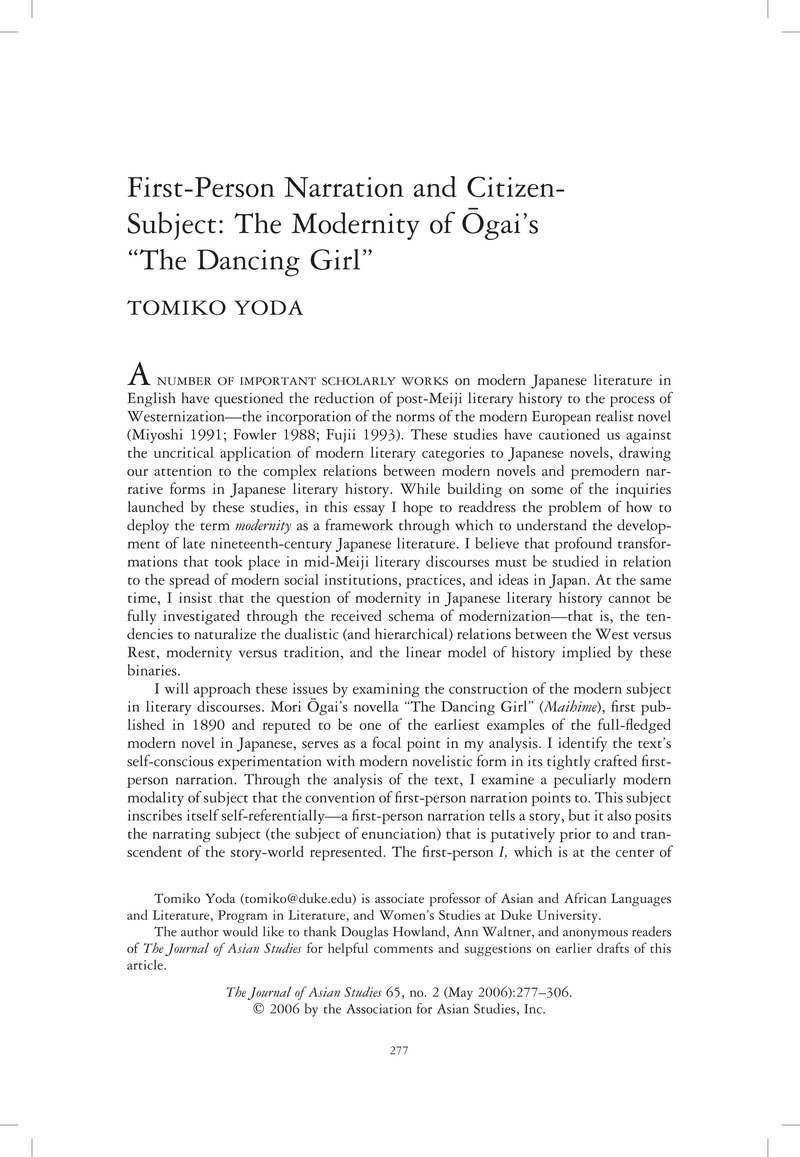Crossref Citations
This article has been cited by the following publications. This list is generated based on data provided by Crossref.
2008.
National History and the World of Nations.
p.
1.
2008.
National History and the World of Nations.
p.
47.
2008.
National History and the World of Nations.
p.
119.
2008.
National History and the World of Nations.
p.
155.
2008.
National History and the World of Nations.
p.
194.
2008.
National History and the World of Nations.
p.
233.
2008.
National History and the World of Nations.
p.
309.
2008.
National History and the World of Nations.
p.
283.
2008.
National History and the World of Nations.
p.
269.
2008.
National History and the World of Nations.
p.
82.
Thouny, Christophe
2019.
Monstrous Narratives: Storytelling in Mori Ōgai’s ‘As If’.
Japanese Studies,
Vol. 39,
Issue. 1,
p.
7.
2021.
A Fictional Commons.
p.
51.
2021.
A Fictional Commons.
p.
177.
2021.
A Fictional Commons.
p.
1.
2021.
A Fictional Commons.
p.
91.
2021.
A Fictional Commons.
p.
205.
2021.
A Fictional Commons.
p.
147.
2021.
A Fictional Commons.
p.
13.
2021.
A Fictional Commons.
p.
121.
Sonnenberg-Musiał, Katarzyna
2022.
Z japońskiej perspektywy.
Między Oryginałem a Przekładem,
Vol. 28,
Issue. 4(58),
p.
127.





